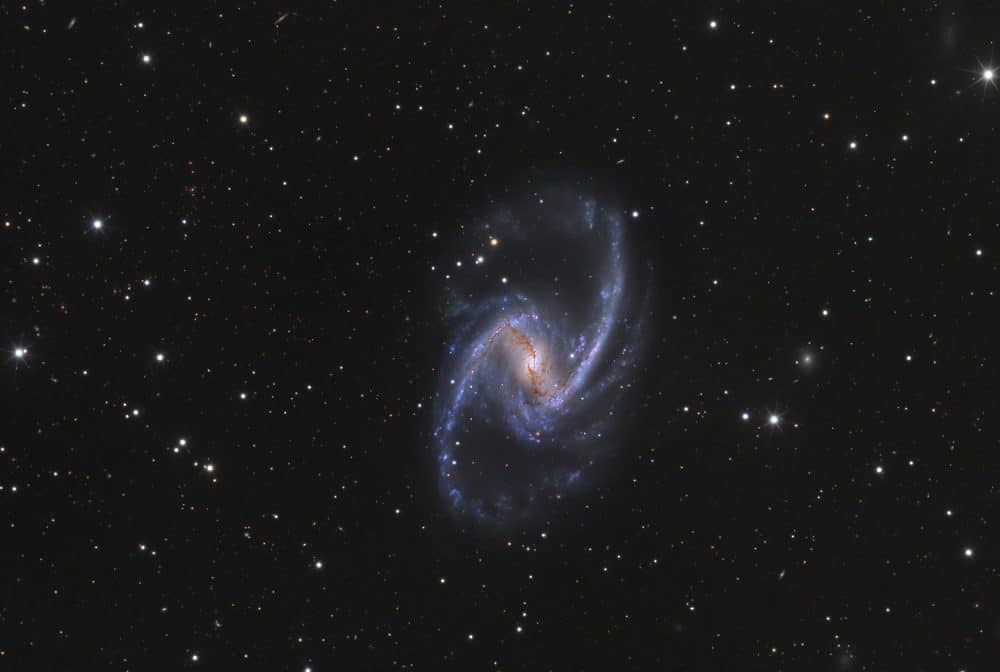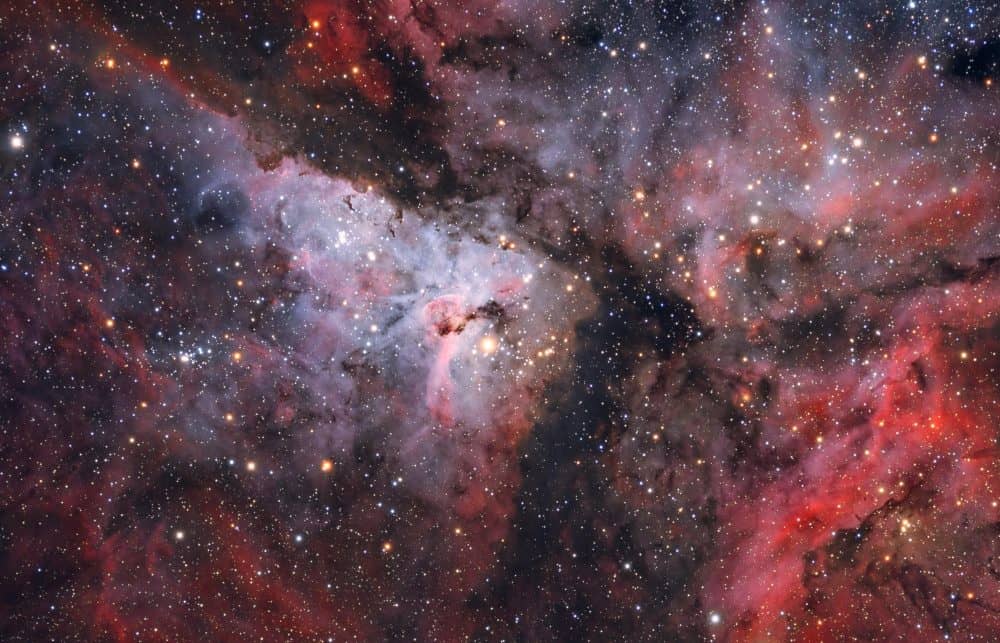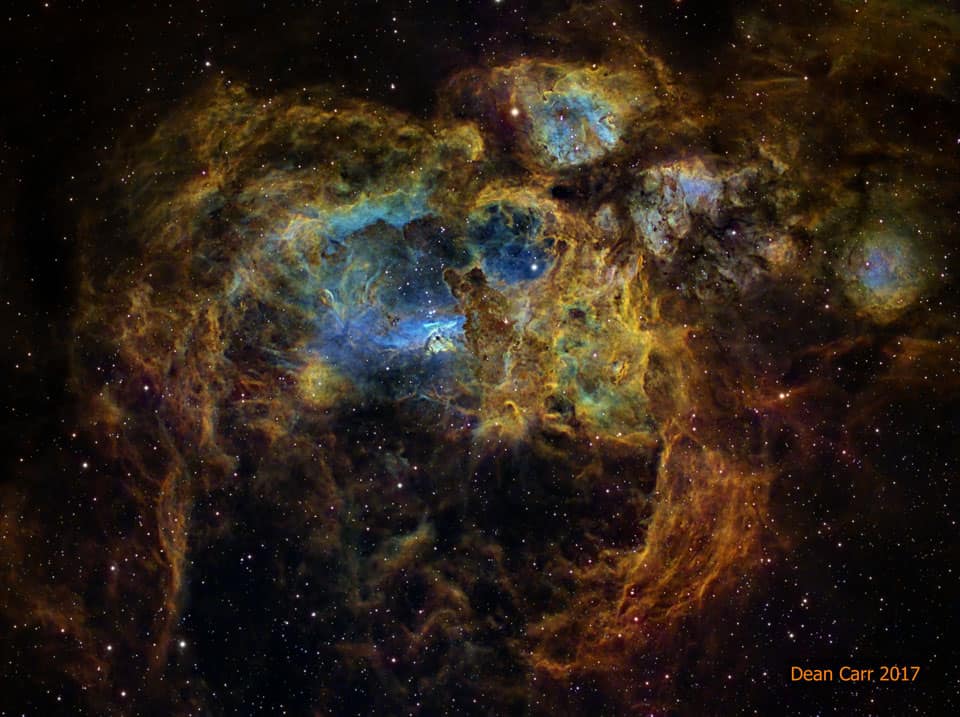Blog
Matthew Tyler Murphy (December 29, 1929 – June 15, 2018), known as Matt “Guitar” Murphy, was an American blues guitarist. He was associated with Memphis Slim, The Blues Brothers and Howlin’ Wolf.
Murphy was born in Sunflower, Mississippi, and was educated in Memphis, Tennessee, where his father worked at the Peabody Hotel. Murphy learned to play guitar when he was a child.
In 1948, Murphy moved to Chicago, where he joined the Howlin’ Wolf Band, which at the time featured Little Junior Parker. In 1952, Murphy recorded with Little Junior Parker and Ike Turner, resulting in the release, “You’re My Angel”/“Bad Women, Bad Whiskey”(Modern 864), credited to Little Junior Parker and the Blue Flames.
more...
Papa Noel Nedule is a soukous recording artist and guitarist in the Democratic Republic of the Congo (DRC).
He was born as Antoine Nedule Monswet on December 25, 1940.Because of his Christmas birthdate, he became known as “Papa Noel,” and he is often referred to under that name (without “Nedule”).
He was once a member of the soukous band TPOK Jazz, led by François Luambo Makiadi, which dominated the Congolese music scene from the 1950s through the 1980s.
He was an original member and leader of the band Kekele when it was founded in 2000, although illness prevented him from joining the band in some of its later recording sessions and tours.
more...Barred spiral galaxy NGC 1365 is truly a majestic island universe some 200,000 light-years across. Located a mere 60 million light-years away toward the chemical constellation Fornax, NGC 1365 is adominant member of the well-studied Fornax galaxy cluster. This impressively sharp color image shows intense star forming regions at the ends of the bar and along the spiral arms, and details of dust lanes cutting across the galaxy’s bright core. At the core lies a supermassive black hole. Astronomers think NGC 1365’s prominent bar plays a crucial role in the galaxy’s evolution, drawing gas and dust into a star-forming maelstrom and ultimately feeding material into the central black hole.
more...Michel Petrucciani (French pronunciation: [miʃɛl petʁutʃani]; Italian: [petrutˈtʃaːni]; 28 December 1962 – 6 January 1999) was a French jazz pianist. From birth he had osteogenesis imperfecta, a genetic disease that causes brittle bones and, in his case, short stature. He became one of the most accomplished jazz pianists of his generation despite having arms that caused him pain.
Michel Petrucciani came from an Italo-French family (his grandfather was from Naples) with a musical background. His father Tony played guitar, his brother Louis played bass, and his brother Philippe also plays the guitar. Michel was born with osteogenesis imperfecta, which is a genetic disease that causes brittle bones and, in his case, short stature. It is also often linked to pulmonary ailments. The disease caused his bones to fracture over 100 times before he reached adolescence and kept him in pain throughout his entire life. “I have pain all the time. I’m used to having hurt arms,” he said. In Michel’s early career, his father and brother occasionally carried him because he could not walk far on his own unaided. In certain respects he considered his disability an advantage, as he got rid of distractions like sports that other boys tended to become involved in. And he hints that his disability was helpful in other parts of his life. He said: “Sometimes I think someone upstairs saved me from being ordinary.
more...Edmund Leonard Thigpen (December 28, 1930 – January 13, 2010) was an American jazz drummer, best known for his work with the Oscar Peterson trio from 1959 to 1965. Thigpen also performed with the Billy Taylor trio from 1956 to 1959.
Born in Chicago, Illinois, Thigpen was raised in Los Angeles and attended Thomas Jefferson High School, where Art Farmer, Dexter Gordon and Chico Hamilton also attended. After majoring in sociology at Los Angeles City College, Thigpen returned to East St. Louis for one year to pursue music while living with his father who had been playing with Andy Kirk‘s Clouds of Joy. His father, Ben Thigpen, was a drummer who played with Andy Kirk for sixteen years during the 1930s and 1940s.
Thigpen first worked professionally in New York City with the Cootie Williams orchestra from 1951 to 1952 at the Savoy Ballroom. During this time he played with musicians such as Dinah Washington, Gil Mellé, Oscar Pettiford, Eddie Vinson, Paul Quinichette, Ernie Wilkins, Charlie Rouse, Lennie Tristano, Jutta Hipp, Johnny Hodges, Dorothy Ashby, Bud Powell, and Billy Taylor.
https://www.youtube.com/watch?v=yHi1lTjN1dk
more...Earl Kenneth Hines, universally known as Earl “Fatha“ Hines (December 28, 1903 – April 22, 1983), was an American jazz pianist and bandleader. He was one of the most influential figures in the development of jazz piano and, according to one major source, is “one of a small number of pianists whose playing shaped the history of jazz”.
The trumpeter Dizzy Gillespie (a member of Hines’s big band, along with Charlie Parker) wrote, “The piano is the basis of modern harmony. This little guy came out of Chicago, Earl Hines. He changed the style of the piano. You can find the roots of Bud Powell, Herbie Hancock, all the guys who came after that. If it hadn’t been for Earl Hines blazing the path for the next generation to come, it’s no telling where or how they would be playing now. There were individual variations but the style of … the modern piano came from Earl Hines.”
The pianist Lennie Tristano said, “Earl Hines is the only one of us capable of creating real jazz and real swing when playing all alone.” Horace Silversaid, “He has a completely unique style. No one can get that sound, no other pianist”. Erroll Garner said, “When you talk about greatness, you talk about Art Tatum and Earl Hines”.
Count Basie said that Hines was, “the greatest piano player in the world”.
Earl Hines was born in Duquesne, Pennsylvania, 12 miles from the center of Pittsburgh, in 1903. His father, Joseph Hines, played cornet and was the leader of the Eureka Brass Band in Pittsburgh, and his stepmother was a church organist.
https://www.youtube.com/watch?v=wsqGBey0zrE
more...World Music on Flamenco Fridays with Tanguillo
The tanguillo is a form, a palo , of flamenco. He developed from the mid-19th century in Cádiz as a variant of Tango flamenco .
The Tanguillo is played, sung and danced in Cádiz, especially during carnival time. Accordingly, he has a lively, cheerful character. Characteristic of many Tanguillos is their polyrhythmics : the classical two-beat rhythm of the tango mixes and overlaps with the threefold rhythms of flamenco. Thanks to its rhythmic variety, the Tanguillo offers great freedom in the choice of metering and text design. Most commonly used is the Cuarteta romanceada , a stanza of four eight-syllable verses.
more...A jewel of the southern sky, the Great Carina Nebula, also known as NGC 3372, spans over 300 light-years, one of our galaxy’s largest star forming regions. Like the smaller, more northerly Great Orion Nebula, the Carina Nebula is easily visible to the unaided eye, though at a distance of 7,500 light-years it is some 5 times farther away. This gorgeous telescopic close-up reveals remarkable details of the region’s central glowing filaments of interstellar gas and obscuring cosmic dust clouds. The field of view is over 50 light-years across. The Carina Nebula is home to young, extremely massive stars, including the stars of open clusterTrumpler 14 (above and left of center) and the still enigmatic variable Eta Carinae, a star with well over 100 times the mass of the Sun. Eta Carinae is the brightest star, centered here just below the dusty Keyhole Nebula(NGC 3324). While Eta Carinae itself maybe on the verge of a supernova explosion, X-ray images indicate that the Great Carina Nebula has been a veritable supernova factory.
more...Terry John Bozzio (born December 27, 1950) is an American drummer best known for his work with Missing Persons and Frank Zappa.
He has been featured on nine solo or collaborative albums, 26 albums with Zappa, and seven albums with Missing Persons. He has been a prolific sideman, playing on numerous releases by other artists since the mid-1970s. He was inducted into the Modern Drummer Hall of Fame in 1997. His son and stepdaughter are also drummers; the latter, Marina, being a member of the band Aldious.
more...Dardanelle or Marcia Marie Hadley (27 December 1917 in Avalon, Mississippi, U.S. – 8 August 1997 in Memphis, Tennessee, U.S.), was an American jazz artist known for performing with Lionel Hampton and early performer using a single name Dardanelle.
Dardanelle was a talented pianist, vibraphonist, and singer who was raised in a musical family. She studied music at Louisiana State University, holding a major, and worked as a house pianist at a local radio station. By the late 1930s she started to appear professionally on the national jazz scene. During the 1940s she led her own Dardanelle Trio, whith various collaboraters, initially with bassist Paul Edenfield and guitarist Tal Farlow. The trio recorded much music and became a regular fixture at New York’s Copacabana. By the 1950s Dardanelle moved to Chicago and paused music in favour of raising a family.
more...Johnny Frigo (December 27, 1916 – July 4, 2007) was an American jazz violinist and bassist. He first appeared in the 1940s as a violinist before working as a bassist. He returned to the violin in the 1980s and enjoyed a comeback, recording several albums as a leader.
Frigo died at age 90 of complications from a fall. He had been battling cancer, according to some reports of his death.
Frigo was born in Chicago and studied violin for three years beginning at age 7. In high school he started to play double bass in dance orchestras. In 1942 he played with Chico Marx‘s orchestra and performed a comedy routine on violin with Marx on piano.[1] He entered the United States Coast Guard during World War II and played in a band on Ellis Island with Al Haig and Kai Winding.
After a brief turn at active service near the end of the war he moved to New Jersey. He toured with Jimmy Dorsey‘s band from 1945 to 1947, later forming the Soft Winds trio with Dorsey’s guitarist Herb Ellis and pianist Lou Carter. During this time he wrote the music and lyrics to “Detour Ahead”,which has been recorded by Billie Holiday, Sarah Vaughan, Ella Fitzgerald, Bill Evans, and Carola. During that time, he also wrote the sardonic swing tune “I Told Ya I Love Ya Now Get Out” which was recorded by June Christy and the Stan Kenton Orchestra. Chicago jazz vocalist Erin McDougaldrecorded the song 50 years later on her album The Auburn Collection (2004).
more...The group is from Moldavia (north-eastern region of Romania, not from the former Soviet state called Moldova). It consists in 10 to 15 Gypsy musicians playing brass instruments. The band leader and his brothers (playing the bass and drum) played with Bregovich in Italy and the whole band played with Emir Kusturica on stage at Odissey 2001 concert in Bucharest. They also represented Romania at highest level at Aichi Expo 2005 in Nagoya – Japan.
more...Cataloged as NGC 6357, the Lobster Nebula houses the open star cluster Pismis 24 near its center — a home to unusually bright and massive stars. The overall blue glow near the inner star forming region results from the emission of ionized hydrogen gas. The surrounding nebula, featured here, holds a complex tapestry of gas, dark dust, stars still forming, and newly born stars. The intricate patterns are caused by complex interactions between interstellar winds, radiation pressures, magnetic fields, and gravity. NGC 6357 spans about 400 light years and lies about 8,000 light years away toward the constellation of the Scorpion.
more...John Scofield (born December 26, 1951), often referred to as “Sco”, is an American jazz-rock guitarist and composer whose playing spans bebop, jazz fusion, funk, blues, soul, and rock.
He has played and collaborated with Miles Davis, Dave Liebman, Joe Henderson, Charles Mingus, Joey DeFrancesco, Herbie Hancock, Eddie Palmieri, Pat Metheny, Bill Frisell, Joe Lovano, Pat Martino, Mavis Staples, Phil Lesh, Billy Cobham, Medeski Martin & Wood, George Duke, Jaco Pastorius, John Mayer, Robert Glasper, and Gov’t Mule.
Scofield’s family left Ohio and relocated to the small, then mostly rural town of Wilton, Connecticut; it was here that he discovered his interest in music.
Educated at the Berklee College of Music, Scofield eventually left school to record with Chet Baker and Gerry Mulligan. He joined the Billy Cobham/George Duke Band soon after and spent two years playing, recording and touring with them. He recorded with Charles Mingus in 1976, and replaced Pat Metheny in Gary Burton‘s quartet. Scofield received an Honorary Doctorate of Music from Berklee in 1997.
In 1976 Scofield signed with Enja Records and released his first album, John Scofield, in 1977. He recorded with pianist Hal Galper, first on his own solo album Rough House in 1978, and then on Galper’s album Ivory Forest (1980), where he played a solo rendition of Thelonious Monk‘s “Monk’s Mood”
https://www.youtube.com/watch?v=H34yjmsaAeE
more...Doug Hammond (born December 26, 1942) is an American free funk/avant-garde jazz drummer, composer, poet, producer, and professor. His first major release was Reflections in the Sea of Nurnen on Tribe Records in 1975.
He has worked with musicians including Earl Hooker, Sonny Rollins, Charles Mingus, Sammy Price, Donald Byrd, Wolfgang Dauner, Ornette Coleman, Steve Coleman, Nina Simone, Betty Carter, Marion Williams, Paquito D’Rivera, Arnett Cobb, James Blood Ulmer and Arthur Blythe.
more...George Edward “Butch” Ballard (December 26, 1918 – October 1, 2011) was an American jazz drummer who played with Louis Armstrong, Count Basie, and Duke Ellington.
Ballard was born in Camden, New Jersey and grew up in the Frankford section of Philadelphia. As a child he followed American Legion parades near his home, focusing particularly on the drummer. When he was about 10 years old, Ballard’s father bought him a set of drums from a pawnbroker and he began to take lessons for 75 cents each. He got the nickname “Butch” after Machine Gun Butch, a character in the film The Big House (1930). He attended Northeast High School in Philadelphia.[1] When he was 21, he married Jessie, for whom he bought a house in Philadelphia in 1950.
more...More Posts
- The Cosmos with Perseid Meteor, Red Sprites, and Nova RS Ophiuchus
- Bill Evans
- Eddie Kirkland
- Carl Perkins
- Mal Waldron
- World Music with Sibusisiwe ‘Busi’ Ncube & Ilanga
- Daily Roots with Dennis Brown
- The Cosmos with M81
- Stix Hooper
- Eddie Gale
- Joe Castro
- Oscar Peterson
- World Music with Asabioje Afenapa
- Daily Roots with Gregory Isaacs
- The Cosmos with Perseid and Andromeda
- David Crosby
- Son Seals
- Eddie Costa
- Stuff Smith
- World Music with Kaleta & Super Yamba Band


